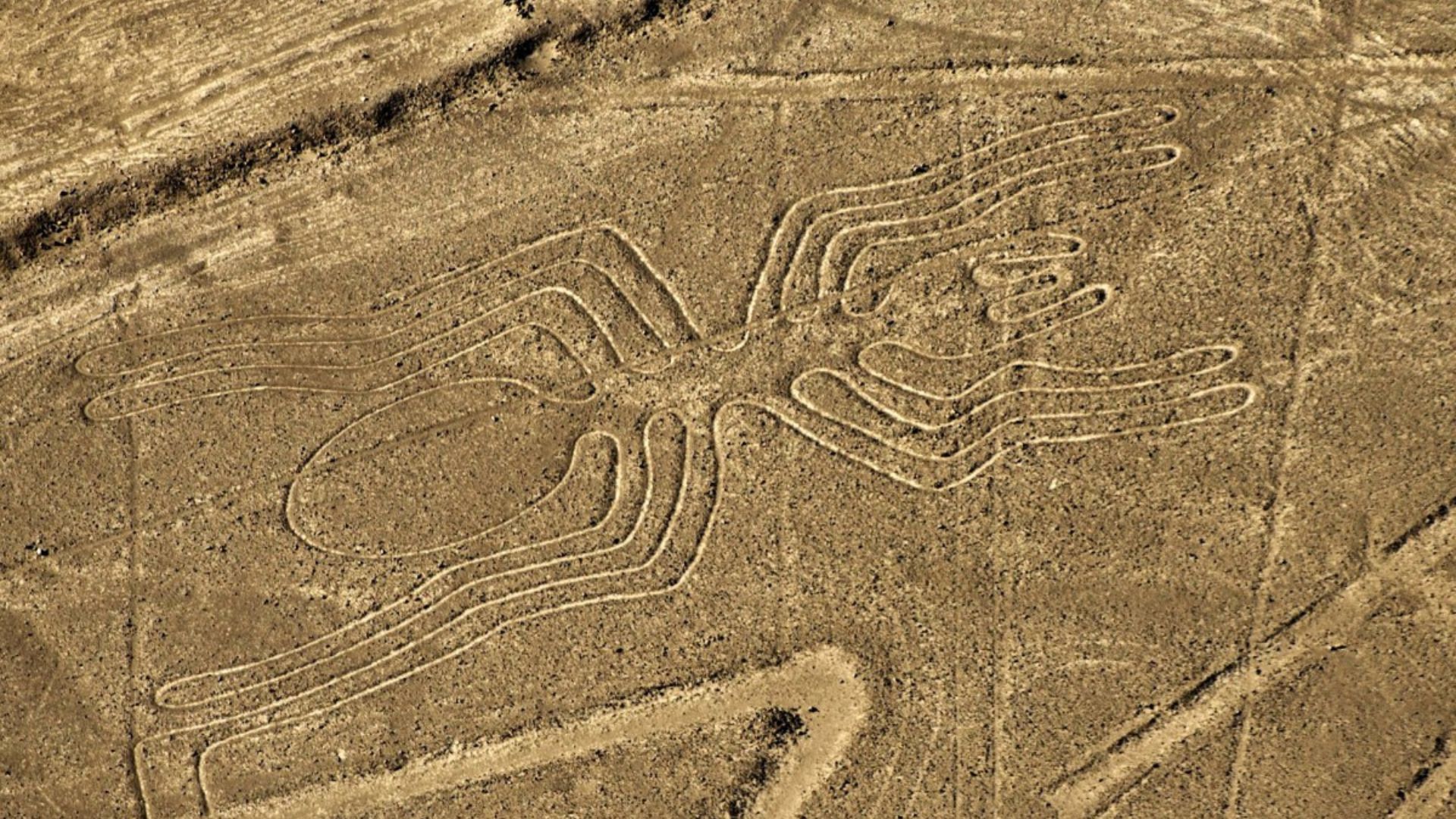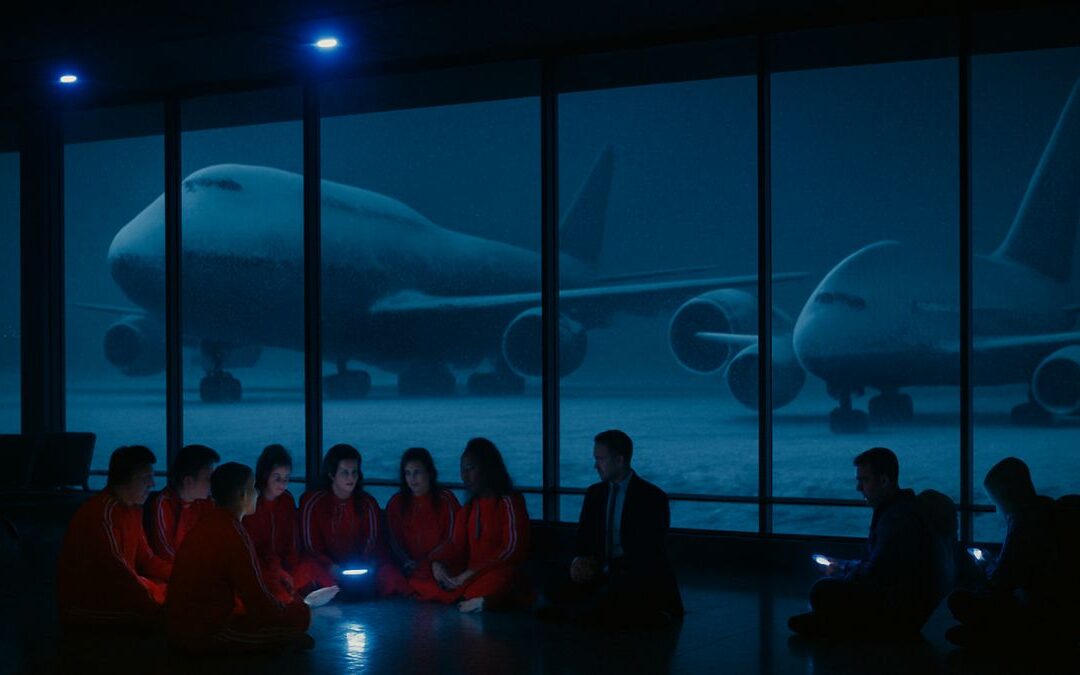Introduction
Sometimes cultures leave behind mysteries that baffle those who come after them, from standing stones to coded manuscripts. Here are a few that have stood the test of time. This is a new episode form our Great Mysteries Series in which we will talk about many interesting and puzzling mysteries yet to be solved.
Audio Episode
Episode Transcript
0:06
Sometimes cultures leave behind mysteries that baffled those who come after them. From standing stones to coated manuscripts. In today’s greatest mysteries episode, we’re going to talk about a few that have stood the test of time. We will talk about the Carnac stones to tar and mummies. The Indus Valley Civilization, the face this disk, the Minoans, the lost city of Thomas the burried city of Petra, the bog bodies, the city of Teotihuacan, the Nazca line, the Bighorn Medicine Wheel, the great Serpent Mound, Easter Island, last DaVinci, Eldorado and a little more so if you are interested stick around because this is a new episode from our series greatest mysteries. This is your host Danny and this is English plus podcast.
1:01
Now before I start, let me remind you that you can find the transcript of this episode on my website English plus podcast.com. The link is in the show notes it will take you to the custom post I created for this episode. But while you’re on the website, take some time to explore the many learning opportunities and not only learning you can enjoy many of the things you can find on the website. There are audio series video series, the episodes with their transcripts and sometimes with exercises and more, you can opt in to receive the daily English plus bytes, and much more and if you want to have access to everything on the website, because I will have to say that some of the content on the website is reserved to patrons only. So if you want to access everything on the website and access all the benefits, you can become a patron on Patreon. The link is also in the show notes. This way you will be supporting the show support me as a content creator and get a lot of benefits. And now without further ado, let’s start our very first question for today. And that question is what is the meaning of the Carnac stones that’s coming next don’t go away.
2:12
More than 3000 Standing Stones scoured by the wind and rain into hunt shapes form long avenues near the French village of Carnac. Made from both single stones known as menhirs and multistone. groups known as dolmens. They stretch for two miles or three kilometers. Though the stones have stood for 1000s of years archaeologists have not traced their purpose or origins. The megaliths have been recognized as sacred by successive waves of Britain culture, Ancient Romans carved their gods on the granite surfaces. Christians later added their own symbols. According to one legend, the many years are the rocky remains of an army of pagans who chased St. coronelli toward the sea cornered he turned his pursuers into stone. In truth. The stones are far older than Christianity and most likely date to Brittany’s pre Celtic Neolithic period from about 4500 BC to 2000 BC, where they raised in tribute to ancient gods did they honor ancestors? Do they track alignments of the sun or stars? So far, the gray armies have kept their secret toe that was our first mystery for today the Carnac stones in France but don’t go away. Next we’re going to talk about the Terran mummies who were the Terran mummies that’s coming next. I’ll be right back.
3:49
Early in the 20th century, archaeologists reported an astonishing find in northern China on the edge of perilous Taklamakan Desert, they were uncovering the preserved body of what to all appearances were Europeans buried in the Tyrion River Basin near a dry riverbed. These naturally mummified bodies have long blonde to brown hair and Western features somewhere close to 4000 years old. At least one group buried in what is known as the small river cemetery wore woolen capes and felt caps with jaunty feathers for all the world like Alpine hikers. Curiously, they were interred in overturned boats above which long or light poles were struck into the ground, possibly researchers suggested phallic symbols. DNA analysis of a group in the small river cemetery showed that the mummies Western appearance was not deceptive. Their genes contained a mixture of European and Siberian lineages
5:00
further evidence of an Eastern European heritage comes from the fact that later inhabitants of the area are known to have spoken an unusual indo European language known as two Korean questions remain, however, about where the tauren people came from. And the reason for their pilgrimage to the area is still unknown. So another mystery to add to our great mystery series. I don’t know if you’ve heard of the term mommies before, but it’s time for you to dig in and learn a little more about it. And that’s the point of all my series and everything I do in English. Plus, I can’t tell you about everything. Obviously, there is no time in the world to do that. But I tried to pique your curiosity so that you can go on and look up things on your own. I believe curiosity is the thing that truly sets us apart from all other species on this planet, although some other species are curious. But we are curious with a purpose in mind. We want to learn more. And if you want to learn more, stick around because that’s not the end of the episode. Next we will talk about the Indus Valley and our question is what happened to the Indus Valley Civilization that’s coming next, don’t go away.
6:15
Three great civilizations dominated the ancient world, Mesopotamia, Egypt, and the Indus Valley culture. Mesopotamia and Egypt evolved over time, conquerors and conquered merging with other cultures. Unlike Mesopotamia and Egypt, however, the Indus Valley Civilization, the largest of the three collapsed and vanished, and no one knows why. Flourishing between about 2500 BCE and 1700 BCE, the Indus Valley people occupied land in what is now mainly Pakistan on the Indian subcontinent. The civilization benefited from the highly fertile lands of the Indus River, floodplains, and trade from nearby Mesopotamia, to large cities. Harappa and Mohenjo Daro, testified to their sophistication and central planning. They were farmers, traders and artisans, whose suppled figurines show a discerning eye. The culture was literate with an elaborate script that remains largely undeciphered. Such a civilization seemed poised to spread through the fertile regions around it. Yet around 1900 BCE, the great city of Mohenjo Daro was wiped out by forces unknown, possibly Aryan invaders described in the reg Vita as destroying forts as age consumes a garment, whoever and whatever tore through the city smashed its statues and moved on. By the end of the second millennium BC, the entire culture had vanished. And we still don’t know exactly what happened to the Indus Valley civilisation. Another great mystery to add to our list of great mysteries in our series, but that’s not it, we still have more. Actually, there’s still a lot more for today’s episode, so don’t go away. Next, I’m going to talk about the Phaistos disk, and we’re going to answer the question what is written on the Phaistos disk, you might not have heard of the Phaistos disk, that’s okay. We’re going to talk about it next. Don’t go away. I’ll be right back.
8:26
In 1908, Italian archaeologists Luigi herniate found a six inch or a 15 centimeter fired play disc in the ruins of the ancient palace of Phaistos. On the Greek island of Crete, they into perhaps 1700 BCE, the time of the Minoan Bronze Age on the island. The disc bears a spiral of stamped symbols that have so far defied translation, the fact that symbols are stamped may suggest a capacity for mass production, although no other discovery supports that the 242 signs consisting of 45 unique stamps are grouped into 61 segments. Many have recognizable shapes such as a tattooed head, an arrow, a plain tree, a cat, and a beehive and they may represent phonetic groups or syllables, but there are too few of them to be deciphered. No other artifact has ever been found with the same symbols attempts to unravel its mystery cretin foreign syllabic reading inward alphabetic reading outward are as varied as its interpreters. A few experts believe the disc is a hoax or forgery, but most accepted as genuine, like other remnants of the enigmatic early Minoan culture, it continues to hold its secrets. Another mystery, right? Maybe you haven’t heard of the Phaistos disk before but now you have and now you know it’s still a mist
10:00
tree and you might want to look it up. You can go do it, but not yet because we’re not done. Next I’m going to talk about the Minoans and I’m going to ask the question, did a volcano destroy the Minoans? So, that’s coming next. Don’t go anywhere. I’ll be right back.
10:18
When British archaeologist Arthur Evans uncovered the intricate ruins of an ancient palace on the island of Crete in 1900, he remembered the legend of King minus. According to Greek mythology, that tyrannical cretin ruler regularly fed young Athenians to the half man half bull Minotaur he kept imprisoned at the center of a labyrinth. Although my nose is creature and his labyrinth may never have existed. Evans’s discoveries showed that a great pre Hellenic culture had indeed once thrived on the Aegean Island, and he named it the Minoan civilization. The Minoans flourished from roughly 2700 BCE to 1450 BC, literate and artistic they commanded trading networks throughout Europe and the Near East. Their civilization came to an abrupt end, however, the great palaces of Knossos and elsewhere were destroyed, and cretin culture vanished. The reasons are still hotly debated. Around this time, a volcano on the nearby island of Fira erupted that an earthquake volcanic ash at tsunami or some combination of these bring down the Minoan palaces, or did Mycenaean armies invade a theory supported by the appearance of Mycenaean artifacts after this period? Could the Minoans have been pulled down from within by an insurrection? Or was it a combination of several factors natural disasters that weaken the culture and armies that gave it the death blow? Despite a wealth of material for now, the Minoans are still keeping their secrets. And that’s another mystery for our episode today. But again, don’t worry, we still have more mysteries for today. So don’t go anywhere, because next I’m going to ask the question of the hidden treasure in the Egyptian city of tarnis. Are there hidden treasures in the Egyptian city of darkness that’s coming next? Don’t go anywhere.
12:28
Thomas may be the most spectacular archaeological site you’ve never heard of. Fans of Raiders of the Lost Ark might recognize it as the buried city that supposedly held the Ark of the Covenant. Readers of the Old Testament may know it as though and where Moses was set to work miracles. Today it is known as sin of Helga but the real historical city of Thomas capital of 21st dynasty, Egypt was lost to the world for roughly 2000 years. Once located on the Nile Delta. It vanished beneath the sands when the river shifted its course, no one knew where to find it, or just what lay within European investigators began to uncover portions of the city by the 19 century. But the most spectacular fines came in 1939 when French archaeologist Pierre monta uncovered a royal tomb complex holding golden masks, jewelry, silver coffins and other treasures rivaling those of King Tut. Sadly, for monta World War Two intervened and eclipsed his discoveries. Those some of Thomas’s treasures can now be found in Cairo’s Egyptian Museum, scientists know there is more to be found. infrared satellite imagery reveals more buildings wanting to be uncovered. So are there still hidden treasures in this Egyptian city of Thomas? We still don’t know. But it is definitely a mystery that deserves a place in our greatest mystery series. And next we’re going to talk about another city that is not in any way less spectacular. We’re talking about the buried city of Petra, what will be found in the bird city of Petra? That’s what we’re gonna talk about next. Don’t go anywhere.
14:23
Travelers seeking the eastern entrance of Petra, the ancient city in Jordan southwestern corner, one of the most dramatic approaches in the world, a 250 foot high or 76 meter slot canyon known as the seek at the canyons, and are the immense pillars of the Treasury, which is actually a temple carved into the sandstone Cliff inside a small tomb. Once an immensely wealthy city, Petra is now largely hidden under sand and debris. Petra was founded by the Nabateans
15:00
Those who are Arab nomads who settled in the area and made it into a center of trade for perhaps 1000 years from about 300 BC to about 700 ad clever water systems allowed for public baths and lush gardens in the desert. Romans moved in around the second century AD, after which the city began to decline until most of its villas, theatres and temples had vanished and its original inhabitants were forgotten. Today, it is a major tourist attraction and a UNESCO heritage site. But most of its wonders remain buried under the desert sand and mystery, is it not, but definitely one of the most beautiful places you will ever see, especially if you’re interested in historic places. So that was another mystery in our series. And next we’re going to talk about the bog bodies. And our question will be where the bog bodies victims of human sacrifice. Well, you might have never heard of the bog bodies, but you will because that’s what we’re going to do next. So don’t go anywhere.
16:10
They are some of the world’s best preserved murder victims bog bodies have been unearthed in PD wetlands across northern Europe. In Denmark, the British Isles, Germany and the Netherlands. Some have been reduced to skeletons, but many are in a remarkable state of natural modification, with skin intact down to the last worry line. Pickled by the acidic oxygen list conditions of certain bogs. The bodies represent a wide range of eras from 8000 BCE to the 20th century, but most date to the Iron Age roughly 2500 years ago. These were are not unlucky hikers who happened to stumble into a buggy trap, most had been bludgeoned, stabbed or hanged, like the Danish Tolan man buried with a leather noose still tight around his neck. Lacking written records, archeologists have been reduced to speculation about the intent behind these murders. Perhaps the victims were particularly despised criminals. Many researchers, however, now believe that the Ritual killings were human sacrifices to gods or goddesses bodies found in Ireland, for example, often bear marks of status, such as jewelry and are dismembered and in turn along boundary lines between kingdoms, unfortunate hostages or royal prisoners, they may have been sacrificed and placed in the bogs as a form of magical protection remaining intact long after their executioner’s had disappeared. So that is another mystery. And now you’ve heard of the bog bodies, if you haven’t heard of them before, but were they the victims of human sacrifice? Who knows? That is why it’s one of our great mysteries, but that’s not the end of today’s mysteries. Next, we’re going to talk about the city of Teotihuacan who built Teotihuacan. I’m sure you’ve heard of the city, the name definitely rings a bell, but actually we’re going to discuss this mystery who built the city that’s coming next. Don’t go anywhere. I’ll be right back.
18:24
The unknown builders of the great city of Teotihuacan seem determined to leave no clues to their identity began around 100 BCE on the Mexican plateau, the city rapidly became the largest metropolis in the Western Hemisphere covering eight square miles or about 20 square kilometers and housing between 80,100 1000 inhabitants. Streets were laid out on a grid bisected by the Broad Avenue of the dead. The tremendous Pyramid of the Sun and Pyramid of the Moon towered over wide roads, temples, residential compounds and workshops. For all of this the industrious folk who raised the city left behind no record of their language or origins. Even the city’s mellifluous name was bestowed by a later culture the Aztecs as it prospered Teotihuacan seem to have drawn immigrants from other cultures including the Maya and Mixtec daily life may have involved routine brutality. skeletons in the temples appeared to be ritual sacrifices, even combs, buttons and needles were made from freshly harvested human bone as mysteriously as it arose. The city was destroyed, burned and abandoned in the seventh century AD invaders may have been responsible, but some researchers note that most of the burned buildings belong to the upper classes to do
20:00
Your walk on may have fallen from within pillaged by an oppressed populace in a time of drought, maybe, but definitely that is a mystery that’s earned its place in our greatest mystery series. But don’t go anywhere because next we’re going to ask the question could blank solve my mysteries? That’s coming next don’t go anywhere.
20:25
Researchers are still filling in the blanks about the rise and fall of the great Maya civilization. Despite the wealth of written records the Maya left behind some of these records have been found at the Mexican side of Poulenc. A stately city of stone temples and plazas that flourished from about 200 to 900 ad abandoned to the jungle for hundreds of years. Phalanx structures, particularly the stairstep Temple of Inscriptions contain extensive carve glyphic texts. By the time the first Europeans reached the Yucatan Peninsula in the 16th century, however, no one remained who could read them. hamfisted investigations did not help matters. In the 1780s Colonel Antonio Del Rio began his search of blanks Palace by smashing through its walls. More recently, those scholars have begun to unravel the complex glyphs. After entering the tomb of Maya ruler Picard found within the Temple of Inscriptions. In the 1970s, archaeologists at blank managed to decode a list of Kings today, about 90% of the glyphs have been deciphered, revealing a complex logo graphic script in which symbols could represent either syllables or words, inscriptions are revealing a warlike people whose internal conflicts may have helped bring about their own destruction, but we still have some mysteries and that’s why I included it as one of our great mysteries. And now we’ll move on to talk about the Nazca Lines. What’s the purpose of the Nazca Lines that’s coming next? Don’t go anywhere.
22:13
2000 years ago, people etched more than 1000 outside figures in the coastal desert of southwestern Peru quadrangles trapezoid spirals, narrow lines in outline suggesting the shapes of giant creatures stretch across hundreds of square miles of arid plateaus concentrated between the towns of Nazca and Palpa. In the 1920s Trans Endian pilots rediscovered the enormous geoglyphs, prompting decades of research to answer the question, what are they for? Many answers have been suggested and discarded over the years. We know that the markings were created primarily by the Nazca culture, which flourished from about 200 BCE to 600 ad. Students of the figures have theorized that they represent irrigation lines and astronomical calendar Inca roads icons to be viewed from archaic hot air balloons. And in the most persistent and improbable notion spaceports for alien aircraft. Today’s leading explanation is simpler. The glyphs may have formed ceremonial pathways in a holy landscape. Many of the figures are associated with rain or fertility, and traces of footprints can still be seen along the lines. So is that the answer? Well, we don’t know for sure. It’s still a mystery. And that’s the beautiful thing about mysteries. We can’t have a definitive answer to why they were there. What’s the purpose of the Nazca Lines and all the questions we’ve asked so far in the episode, but that’s not the end of it. That’s not the end of the episode, we’re going to ask more questions. So don’t go anywhere because next I’m going to ask the question is the Bighorn Medicine Wheel, an astronomical calendar that’s coming next don’t go anywhere.
24:11
Whatever its purpose, the Bighorn Medicine Wheel was not meant to be easy to reach. The 75 foot wide or 23 meter stone circle is located at the top of medicine mountain 9642 feet or 2939 meters up in Wyoming’s Bighorn mountain range for about 10 months of the year. It is buried under impassable snow. In spite of this or perhaps because of it. The wheel is a sacred Native American site probably constructed by Plains Indian tribes about 700 years ago. It is the best known of some 70 similar wheels found in the United States and Canada. At the Bighorn wheel center is a stone care
25:00
and from which radiate 28 Rocky spokes six more Cairns are positioned around the circumference. No records exist to tell us of its original purpose, but the wheels alignment is suggestive. The line from one Karen through the hub marks sunrise at the summer solstice the line from another Garin marks sunset on the same day, another alignment track the rising of the bright stars Cyrus AlDub, Orion and Reigle, which are important in the legends of several Indian peoples, the 28 spokes may represent the 28 days in the lunar calendar intentionally or not, the wheel makes an impressive astronomical calendar. But of course, as usual, we don’t know that for sure. It’s still a mystery. And that’s not everything. Next we’re going to talk about the first American colonists were America’s first colonists. Vikings. That’s what we’re going to talk about next. Don’t go anywhere.
26:04
For generations, American school children were taught in 14 192, Columbus sailed the ocean blue, marking the discovery of North America. Even though thoughtful teachers pointed out that the new world had been discovered 1000s of years earlier by Native Americans, the Italian navigator was hailed as the first European to reach the continent. dissenters, however, have pointed to an alternate theory. According to medieval Norse Sagas, the enterprising Viking Leif Erikson, set sail from Greenland in the year 1000 and reached a lush grassy land to the west, rich with timbers salmon and grapes. Other Norse family soon joined him in Finland, where they began to clash with the natives they called scrapings. This account was met with skepticism until 1960, when two Norwegian explorers Hellgate and an ink starred began to uncover the remains of a colony at Lancel meadows in Newfoundland, Canada. Buried within the confines of eight buildings were Norse artifacts, including a lamp, a cloak pin, a spindle, and iron boat nails. Scholars now generally agree that lands or Meadows was the first Norse colony in North America, probably inhabited for just a few years before the families returned to Greenland with their discovery fading into Norse legend, taupe that was about the first American colonists. But again, we still don’t know for sure, we just have findings and theories. But I kind of tend to believe this theory. I don’t know about you, it’s up to you. If you want to learn more, why don’t you just go look up some more information and maybe share them with me if you like, I’m always willing to learn something new. And I bet you are too, because that’s not the end of our episode. Next, we’re going to talk about the great Serpent Mound, what is the meaning of the great Serpent Mound that’s coming next, don’t go anywhere
28:13
more than 1300 feet or 396 meters long, about 20 to 25 feet six to eight meters wide and four to five feet or one to two meters high. The great Serpent Mound undulates across the hills of southern Ohio, the largest effigy mound in the world. It still ends in an elegant coil, and its head seems to be swallowing a giant egg, who built it and what it means are still unknown. First described in the 1840s. The sinuous mound was originally attributed to the ancient Adena people who inhabited the area from about 500 BC to 200 ad and whose remains are found in nearby burials. More recently, radiocarbon dating suggests that it is younger, perhaps about 900 years old from the time of the fourth ancient people. The fourth ancient culture was influenced by the Mississippian culture, which featured rattlesnakes in much of its iconography. Indeed, many Native American cultures imbued serpents with spiritual power. Some archaeologists point out that the Serpent Mound head aligns with the summer solstice, so it may have had an astronomical or ceremonial purpose. In the absence of any artifacts or written records however, the mount may remain a vast serpentine and Nygma and another great mystery for our series and not the last for today’s episode. Next, we’re going to talk about Easter Island and we’re going to ask the question whether we will ever understand Easter islands art and writings that’s coming next. Don’t go anywhere. I’ll be right back.
30:00
Easter Island or Rapanui, in the language of its people is the most isolated inhabited spot on earth. More than 1000 years ago, its inhabitants raised hundreds of multi ton monoliths known as more why that have fascinated archaeologists since their discovery some 300 years ago, carved primarily from volcanic tuff with hand tools. The statues were transported somehow to positions on stone platforms. What was their purpose? How did the people lacking technology move the monoliths Easter islanders set the statues walked, some writers claimed the Moy could only have been positioned by Lost Civilizations or extraterrestrials, more scholarly sources suggested they could have been hold on frames. Recently, archaeologists have shown that the Eastern islanders might have had it right, the statues walked, a couple of dozen people using ropes can rock a Moai from side to side on its curve based and walk it forward. By the time European explorers arrived, many of the more I were toppled and their meaning lost a memory. They may have been symbols of power between warring groups, they may have had a peaceful religious purpose. Who knows wooden and stone tablets found here are also a mystery. They contain an undeciphered Ranga wrongness crypt, the curious glyphs run left to right then left to right when the tablet is up ended. Like the statues. The script has so far defied explanation, another mystery. Next, we’re going to talk about the Voynich Manuscript. What is the meaning of this manuscript that’s coming next? Don’t go anywhere.
31:53
The Voynich manuscript is both a codebreakers delight and Bane the 240 page vellum work is written in an unknown language and contains hundreds of ink illustrations of astrological symbols, unidentified planets and bizarre human figures. legions of cryptographers, including some of the best in the world have tried and failed to decipher the manuscripts lettering, is it an herbal manual, and alchemical guide? No one knows. The manuscript is named after the Polish American bookseller Wilfred voinut, who bought it in 1912, but its provenance is much older. The work dates back at least to the Emperor Rudolph the second of Germany, who live from 1576 to 1612, an emperor Rudolph acquired it for 600 Gold duckets, believing it to be the work of medieval scholar Roger Bacon, the seller may have been the notorious English astrologer and student of the so called John D, who had a collection of bacon’s works. The manuscript then passed through various other European owners, none of whom could make sense of it. If the indecipherable manuscript is a hoax, it is an old one. Recent tests show that it dates to the early 15th century. Today, the Voynich Manuscript resides in yields library as mysterious as ever till it is still a big mystery. Who knows if it is a hoax? It’s one of the oldest hoax there is. But it is another mystery in our episode, and it’s not the last one. We still have a couple of mysteries before we end today’s episode. The next one we’re going to talk about whether a Florentine wall hide a los DaVinci that’s coming next don’t go anywhere.
33:45
In 1502, Florentine politician Piero soda Rini commissioned Leonardo da Vinci to paint a mural in Florence’s Palazzo Vecchio. The final painting depicting the victory of Tuscan forces at the Battle of Anghiari was huge as much as 20 feet or six meters long and 10 feet or three meters high. The Vinci was not happy with it. However, experimenting with oil paints on the wall of the hall of the 500 the artists found that the colors ran and blurred. He abandoned the mural unfinished, many viewers were impressed by the dramatic battle scene, but when the hall was remodeled artist Giorgio Vasari was hired to paint over the Vinci’s work. Some scholars think that we’re sorry, an admirer of Da Vinci’s work, built a false wall to protect it and painted his own mural on top is the DaVinci still here hidden and immensely valuable. In 2012, art historian Mauricio Serra cine announced that he had inserted that tiny camera into a crack in the wall and detected a hollow space and black pigment behind Vasari’s mural. The investigation is on hold
35:00
Leaving the fate of the last masterpiece, an open question. So does a Florentine wall high the laws De Vinci? Who knows it’s not easy to answer, even with all the technology we have? It’s not an easy question to answer. It’s still a mystery. Maybe it’s there. Maybe it’s not who knows. But next we’re going to talk about the Piri Reis map. What are the sources of the Piri Reis map? That’s coming next don’t go anywhere.
35:28
Haji Ahmed mohideen Pirrie. Better known now as Piri Reese or Captain Pirie was an accomplished Turkish Admiral and mapmaker of the 16th century. cartographers and lost civilization enthusiasts know him primarily as the creator of a beautiful 1513 map last for many years. The map was rediscovered in the 20th century and is now held in Istanbul’s Topkapi Palace. It seems to represent just part of the original document given some references to Asia found in the writing, but unfortunately, the rest of the map has vanished. It may be the oldest surviving map to show the Americas for cartographers. The map is remarkable for its detailed rendering of the coast of South America only two decades after European discovery. For those with a more imaginative bent. The document is set to show land masses including Antarctica, unknown at the time, and therefore the map must have been created 1000s of years earlier, by an unknown advanced civilization. The claim derives mainly from the fact that the map South American coastline veers far to the east almost as if tracing the northern edge of Antarctica however, closer examination shows that the coast is quite different from that of Antarctica, and the latitude is 1000s of miles astray. Peary’s notes on the map that he compiled it from many sources, including Portuguese explorers, and it seems likely that those sources were simply too sparse to be accurate. However, the document does contain information that in theory was unknown at the time, including the presence of an interior mountain range in South America, the true mystery may be who charted these details and why has history forgotten these early explorers that remains a mystery but that’s not the last mystery for today’s episode. We still have two more don’t go anywhere, because we’re going to talk about Eldorado next I’ll be right back.
37:40
The first Eldorado was a man not a city, Spanish explorers in South America heard his legend early in the 1500s. Somewhere in the Andes, they were told the Muisca Indians would initiate a new chief by dusting him with gold from head to foot and tossing golden emeralds into a sacred lake. besotted with greed, Spanish, German, Portuguese and English adventurers ventured into the unforgiving wilds of Colombia, Gorjana, Brazil and anywhere else that sounded promising in search of this mystic treasure. Over time, Eldorado was transformed in the telling from a man into a valley paved with gold just waiting for discovery among the adventurers for Sir Walter rally, whose son Walker died in the attempt in 1617. And who was himself executed upon his return to Europe for disobeying the Kings instructions. Many people both Native Americans and Europeans died in these brutal quests. No golden Trove was ever found. There may be some truth to the legend. However, the lake mentioned in the Muisca story may be Laguna Guate Vita high in the Andes, near Bogota, Colombia, some golden objects and jewels have been dredged from that body of water and another nearby but attempts to drain the lake and recover the reputed riches of old failed, whatever treasure is drowned there remains undisturbed. And now we come to the very last mystery for today’s episode that’s coming next. Don’t go anywhere.
39:23
It’s as if archaeologists of the future discovered the last few pages of a notepad of today with the faint impressions of doodles, grocery lists, musings, and schoolwork overlaid on the paper in 2009. excavations in an old well in Jamestown, Virginia, America’s first permanent European settlement uncovered a colonial era slate tablet covered with overlapping scratched inscriptions. These include drawings of a man with a rough color, what appears to be a Palmito tree and words Reading either a mining of the fine
40:00
sort of mining or minion being either a servant or cannon, or the more modest I am none of the finest sort. The slates, marks and original owner or owners remain a mystery. The Palmito tree suggests that the artist had been traveling south of Jamestown. He may have been William stretchy who survived a shipwreck in Bermuda to become the colony’s first secretary. The well in which the tablet was found was dug around 1608 to 1610 under the orders of John Smith, James downs leader, and was made into a trash pit after it became brackish and unusable colonial trash is an archeologists treasure. And the discarded slate isn’t particularly valuable, fine, but we still don’t understand a lot about it. And maybe it was not that important. Who knows, but it is still an archaeological fine. And with this question in this fine and this mystery, we come to the end of today’s great mysteries episode, don’t forget that our great mystery series is not over yet, we still have a couple of episodes to come. And for those of you who are listening to great mysteries for the very first time, this is definitely not episode one. This is episode three. So you can go back and listen to episode one and two, because these are as interesting as this episode. If not even more and more is coming your way. Don’t forget to tune in every week to listen to this series. But of course, you can come back every day because every day we have a new series, one of them is worth power. Another one is shocking events that made history this great mystery series and Essential Guide to the body and brain and new series are coming your way very soon. Don’t forget that you can find the transcript of this episode on my website English plus podcast.com. The link is in the show notes. And there’s another link that will take you to my Patreon page where you can become a patron support me support this podcast and get a lot of benefits that will be yours if you become a patron. The link is also in the show notes. Check it out, see the benefits and decide for yourself. And don’t forget to explore the website while you’re there because there are a lot of interesting things you can find on my website English plus podcast.com. With that we come to the end of today’s episode. That’s everything for today. This is your host Danny Thank you very much for listening to another episode from English plus podcast. I will see you next time.










0 Comments